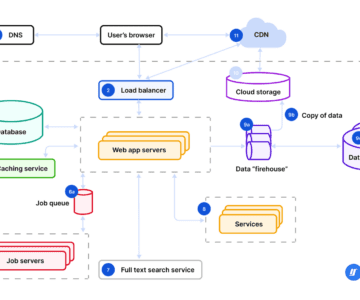The concept of cross-platform app development can often be confusing. A major source of this confusion is the term "platform," which can mean different things: hardware types like mobile phones or desktop computers, platform mobile development frameworks,or operating systems like Windows, Linux, iOS, or Android. This variety of meanings often leads to misreadings.
Let's start by clarifying that cross-platform approaches differ between desktop and mobile devices. For mobile apps, the main idea is to use a single reusable codebase for all platforms. This isn’t always the case for desktop software and consoles, where different versions might require different codebases.
Additionally, some experts use "cross-platform" and "hybrid" interchangeably, but this isn’t entirely accurate for mobile platforms. In this article, we’ll highlight the benefits of cross platform mobile development and clarify the differences between these two types of mobile applications.
It's also worth noting that progressive web applications (PWAs) can be considered "cross-platform" because they work across various platforms and operating systems through web browsers. While they can run on mobile devices, they aren’t built exclusively for mobile platforms. That’s why we won’t cover them here.
By the end of this article, you’ll have a clearer understanding of cross platform mobile app development frameworks and how it can benefit your projects. Let's dive in!
What Is Cross-Platform App Development for Mobile Devices
When we talk about “cross-platform mobile development,” we're referring to one of the ways to build software for mobile devices and multiple platforms. Overall, there are three main approaches to mobile application development, each with its own pros and cons:
- Cross-platform. This type of software works on different mobile platforms. What makes it special is that a cross platform app typically uses a single codebase. Most of the code is shared or reused for different mobile operating systems. Specialized frameworks enable this, helping developers reduce the limitations while still providing a “native-like” user experience.
- Native. This type of application is written exclusively for one particular platform. It is designed to utilize all relevant software and hardware features available on that platform. Because developers focus on one mobile platform, the same code cannot be reused on other platform.
- Hybrid. This approach to mobile app development combines native and web technologies. Developers write the code in web development languages like CSS or HTML. Then, they wrap this code in a “native” shell. Hybrid apps are very similar to cross platform apps. The differences between them are often subtle. Because of this, many specialists treat them the same for simplicity.
There are only two operating systems that dominate the industry of mobile devices: Android and iOS. Together, they cover over 99% of the market, making other operating systems almost irrelevant. That’s why, these days, when we talk about a "cross-platform mobile application," we usually mean software that works on both Android and iOS devices.
One code for all platforms. The main concept of cross-platform mobile apps is using a single codebase, fully or partially, on all target platforms. While “reusable code” has its limitations, it also leads to several further benefits.
Lower costs to cover platforms. "One code fits all" is a cost-effective approach that maximizes a limited budget. With cross-platform development, there's no need for two dedicated teams to handle separate Android and iOS versions. Plus, native app developers charge more and are hard to come by. Using a single team with one stack of technologies for both platforms not only simplifies the process but also significantly cuts costs.
Less time to deliver a final software product. Using one codebase and one team simplifies the software development process compared with managing two teams at the same time. For example, managers do not need to synchronize the progress of two teams to release the software product on iOS and Android at the same time. Two native versions of an app would mean double coding, double testing, etc.
Larger user coverage. Thanks to cross platform mobile development, an application can reach more users. This approach offers a sufficient level of compatibility for different operating systems. It also maintains some level of “native” experience, so users feel more comfortable with their interaction with an app. That’s why cross-platform development is preferred if a project’s budget is not large enough to build two separate native applications.
Popular Cross platform Mobile Development Tools and Technologies
Over the years, developers have created many tools for building cross-platform applications. Here are the top 5 most popular frameworks that are currently used for mobile solutions for this purpose:
React Native
Pros: React Native, created by Meta in 2015, has taken the app development world by storm. Its ability to render React components to native platform UI components gives the power to create slick, customized, and responsive user interfaces. It also supports operating systems for smart TV, such as tvOS and Android TV, and virtual reality devices.
Flexibility, modular architecture, and extensive third-party library support are just a few of React Native's appealing features. These traits make it an attractive choice for many cross platform app developers, enabling the creation of some of the most famous and profitable mobile apps, including Facebook, Skype, Shopify, and Microsoft Office
Cons: While React Native provides the significant advantage of cross-platform development and a vibrant community, it does come with several drawbacks. Performance can be an issue, especially for complex, resource-intensive apps, due to the JavaScript-native code bridge. Limited native API support often requires custom native modules or third-party libraries, adding to the complexity


















